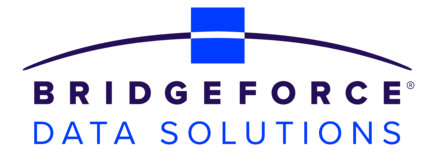Ensure the accuracy of your ACDV data and identify data issues in indirect disputes with a Data Quality Scanner free trial. Enter your name and email below to learn more.
Over the past year, we have shared informative blogs about the technical aspects of credit reporting. Our first two posts covered essential topics in this field: Metro 2® Compliance and e-OSCAR. To continue this series, we will focus on two important components of the disputes landscape: Automated Consumer Dispute Verification (ACDV) and the Automated Universal Dataform (AUD).
Background
In the credit reporting ecosystem, accuracy is paramount. Credit reports influence financial decisions, from loan approvals to interest rates, making it essential that the information they contain is reliable and up to date. However, errors in credit reports are not uncommon, and when inaccuracies arise, consumers have the right to dispute them under the Fair Credit Reporting Act (FCRA). To facilitate accurate reporting and efficient dispute resolution, the industry relies on standardized data formats and automated processes.
The Metro 2® format, developed by the Consumer Data Industry Association (CDIA), sets the standard for reporting credit information to credit bureaus, ensuring consistency across financial institutions.
When disputes arise, they are processed through e-OSCAR (Electronic Online Solution for Complete and Accurate Reporting), an automated system that enables credit bureaus and data furnishers to communicate and resolve disputes efficiently. Within this framework, two key data processes play a critical role: Automated Credit Dispute Verification (ACDV) and Automated Universal Dataform (AUD). These mechanisms help credit reporting data furnishers verify, update, and correct credit data, ensuring compliance with regulatory requirements and protecting consumer rights.
ACDV and AUD, as structured dispute resolution mechanisms, are essential tools for addressing disputes in credit reporting. These processes enable credit bureaus and data furnishers to communicate consumers’ disputes about the accuracy of credit reporting information and detail how credit bureaus and data furnishers respond.
Together, they ensure fairness and transparency in credit reporting.
In this blog, we’ll explore how credit reporting dispute data works, explain the differences between ACDV and AUD, and discuss best practices for keeping credit reporting accurate. Understanding these processes is vital for consumers, credit bureaus, and credit reporting data furnishers, as they all contribute to the credibility of the credit ecosystem.
The Importance of Dispute Data
Dispute data includes any information about challenges consumers raise about inaccuracies or inconsistencies in their credit reports. When a consumer identifies an error, such as incorrect personal information, unrecognized accounts, or erroneous payment histories, they have the right to dispute this information with the credit reporting agencies (CRAs) or directly with the data furnishers (e.g., banks, lenders, collection agencies, other). The communications generated during this dispute process form the basis of dispute data, which is crucial for correcting errors.
Enhancing Accuracy and Transparency
Dispute data plays a pivotal role in enhancing the accuracy and transparency of credit reports. The dispute process ensures that credit reports reflect accurate and up-to-date credit histories by providing a formal mechanism for consumers to challenge and correct erroneous information. This helps consumers maintain fair credit standings and enables lenders and other entities to make decisions based on accurate information.
Indirect vs Direct Dispute Data
There are two main types of credit disputes: direct and indirect. A direct dispute occurs when a consumer contacts the data furnisher directly to challenge inaccurate information on their credit report. This may be done through a written letter, phone call, e-mail, website submission, or in-person request, depending on how the furnisher has informed its customers on how they will accept direct disputes.
Under the Fair Credit Reporting Act (FCRA), data furnishers are required to investigate the dispute, verify the accuracy of the reported information, and correct any errors as necessary. If the furnisher determines that the disputed information needs to be updated or removed, they submit an AUD through e-OSCAR. This ensures that the corrected information is reflected across all major credit bureaus, maintaining the accuracy and integrity of consumer credit reports.
An indirect dispute, on the other hand, is filed through a CRA rather than directly with the data furnisher. When a consumer submits a dispute to a CRA, the agency reviews the claim and forwards it to the relevant data furnisher via the ACDV in e-OSCAR.
The data furnisher is then required to investigate the claim, verify the accuracy of the disputed information, and respond to the ACDV through e-OSCAR, which relays the dispute resolution to the CRA. Once the investigation is complete, the CRA updates the consumer’s credit report based on the furnisher’s response.
What is ACDV Dispute Data?
ACDV is the electronic form that the credit reporting industry uses to investigate and resolve indirect disputes. When a consumer disputes an item on their credit report directly with a CRA, the CRA generates an ACDV containing the disputed information and sends it to the relevant data furnisher for review. This process is facilitated by the e-OSCAR system.
ACDV’s Role in Verifying Credit Disputes
The ACDV serves as a standardized conduit between CRAs and data furnishers, ensuring clear and efficient communication of indirect disputes. When data furnishers receive an ACDV, they are legally required to investigate the disputed information, compare it against their records, and respond with their findings. This response may include verifying the accuracy, updating the information, or requesting deletion. This structured process systematically addresses consumer disputes, helping rectify credit report inaccuracies.
Utilization by Credit Reporting Data Furnishers and Credit Bureaus
Credit reporting data furnishers and credit bureaus rely on the ACDV process to maintain the integrity of the credit reporting system. For credit bureaus, ACDVs provide a methodical approach to handling consumer disputes, ensuring compliance with regulatory requirements. As data furnishers, they utilize ACDVs to receive and respond to disputes, enabling them to correct any discrepancies in the information they have reported. This collaborative interaction is essential to upholding the accuracy of credit data and fostering trust in the credit reporting ecosystem.
What is AUD Dispute Data?
The Automated Universal Dataform (AUD) is an electronic form credit reporting data furnishers use to update or correct information previously reported to CRA’s proactively, often used as a mechanism to respond to direct disputes a furnisher received from a consumer. Furnishers can initiate changes to credit data when needed through the AUD process, unlike ACDVs, which react to consumer disputes submitted to CRAs. The e-OSCAR system facilitates this process, ensuring standardized communication between furnishers and CRAs.
Benefits of Using AUDs
AUDs play a crucial role in maintaining accurate credit records by helping data furnishers:
- Maintain Audit Trails: Documenting changes to consumer credit information, providing a history of data modifications.
- Validate Data: Ensuring that the information reported aligns with the furnishers’ records, thereby upholding data integrity.
- Address Direct Disputes: Implementing necessary corrections resulting from internal reviews or direct consumer disputes, even before such disputes reach the CRAs.
While both ACDV and AUD processes aim to ensure the accuracy of credit information, they differ in their initiation and application:
- Initiation: CRAs typically initiate ACDVs in response to consumer disputes submitted to the CRA (indirect disputes), while data furnishers initiate AUDs to update or correct information proactively, including in response to direct disputes.
- Application: ACDVs focus on resolving specific consumer disputes, resulting in targeted investigations. In contrast, AUDs can help systemic errors both from direct disputes as well as any furnisher self-identified issues.
Understanding these distinctions is vital for stakeholders to navigate the credit reporting landscape effectively.
Impact on Dispute Resolution, Regulatory Compliance, and Consumer Rights
Dispute Resolution: ACDVs and AUDs directly address consumer-raised issues, ensuring that specific inaccuracies are investigated and rectified. AUDs also enable furnishers to correct errors that are identified outside of the disputes process.
Regulatory Compliance: Both processes are integral to compliance with regulations such as the Fair Credit Reporting Act (FCRA), which mandates accurate reporting and timely dispute resolution.
Consumer Rights: Consumers have the right to challenge inaccuracies directly to furnishers and to CRAs. The ACDV and AUD processes help furnishers and CRAs respond to consumers’ disputes and maintaining accurate data, thereby protecting consumer interests.
The Importance of Accurate Dispute Data
Accurate dispute data is fundamental to the integrity of the credit reporting system. Efficient management of ACDV and AUD processes yields significant advantages for all stakeholders involved.
Consumers: Accurate credit reports are essential for consumers seeking loans, mortgages, or employment opportunities. Effective dispute resolution ensures that consumers are not unfairly penalized for erroneous information, safeguarding their financial well-being.
Credit Bureaus (CRAs): By maintaining precise and up-to-date credit data, CRAs enhance their credibility and trustworthiness. This reliability is crucial for their role in the financial ecosystem, as lenders and other entities depend on their data for decision-making.
Data Furnishers: Ensuring the accuracy of reported data is not only a regulatory obligation but also a means to avoid potential legal and financial repercussions for entities that provide consumer credit information.
Challenges
Despite the structured nature of ACDV and AUD processes, several challenges persist.
Data Quality Issues: Inaccurate or incomplete data is more common than expected and can lead to erroneous reporting, which can result in consumer disputes and potential regulatory scrutiny or civil litigation.
Regulatory Compliance: Navigating the complex landscape of credit reporting regulations requires meticulous attention to detail and robust compliance frameworks.
High Volume of Disputes: Data furnishers often face an overwhelming number of disputes, including frivolous or duplicate claims, which can strain resources and impede efficient resolution.
Best Practices and Recommendations
Implement Robust Data Validation Protocols: Create comprehensive procedures to verify the accuracy and completeness of data before furnishing it to CRAs. This proactive approach can significantly reduce the incidence of disputes.
Develop a Consumer-Centric Approach: Prioritize clear communication with consumers throughout the dispute process. Providing timely updates and transparent information fosters trust and can lead to more amicable resolutions.
Continuous Training and Education: Regularly train staff on the latest regulatory requirements and dispute management techniques. An informed team is better equipped to handle disputes effectively and maintain compliance.
Leverage Automation Tools: Automated tools like the DQS Disputes Module enhance efficiency and reduce manual errors by automatically reviewing 100% of an organization’s disputes data. This improvement allows QA agents to spend more time training staff and updating procedures.
How the Data Quality Scanner Helps
To further improve the effectiveness of ACDV and AUD processes, integrating the Data Quality Scanner (DQS) can provide significant advantages via:
- Proactive Error Detection: DQS can automatically identify discrepancies and inconsistencies in credit data before they lead to disputes. This proactive approach allows data furnishers to address issues quickly, preventing more significant problems from arising.
- Enhanced Compliance: By ensuring data quality, CRAs and data furnishers can better comply with regulatory requirements related to credit reporting. DQS helps ensure that the data submitted to CRAs aligns with reporting guidelines and without errors
- Streamlined Dispute Resolution: The overall volume of disputes may decrease with reliable data. When disputes occur, the information provided by DQS can help expedite the resolution process, leading to quicker and more accurate responses to ACDVs and AUDs.
- Enhanced Quality Assurance and Quality Control Efforts: QA & QC teams using DQS can automatically review 100% of their dispute data instead of manually reviewing dispute response or finding comprehensive samples. This frees up time to update policies and procedures and train agents more broadly on applicable issues.
- Improved Consumer Trust: Maintaining data integrity fosters trust among consumers, credit bureaus, and data furnishers. When credit reporting and dispute processes are reliable, consumers can feel confident that their credit reports accurately represent their credit histories.
Contact us today to learn more about our dispute solutions.
Conclusion
The ACDV and AUD processes are integral to the credit reporting system, ensuring that consumer credit information remains accurate and reliable. Effective management of these processes benefits consumers by protecting their financial interests, supports credit bureaus in maintaining data integrity, and assists data furnishers in fulfilling their regulatory obligations.
As the financial landscape evolves, the importance of accurate dispute data becomes increasingly pronounced. Advancements in technology and the growing complexity of loan products necessitate robust dispute management frameworks. Stakeholders must remain vigilant and adaptable, embracing innovations that enhance accuracy and efficiency in credit reporting.



